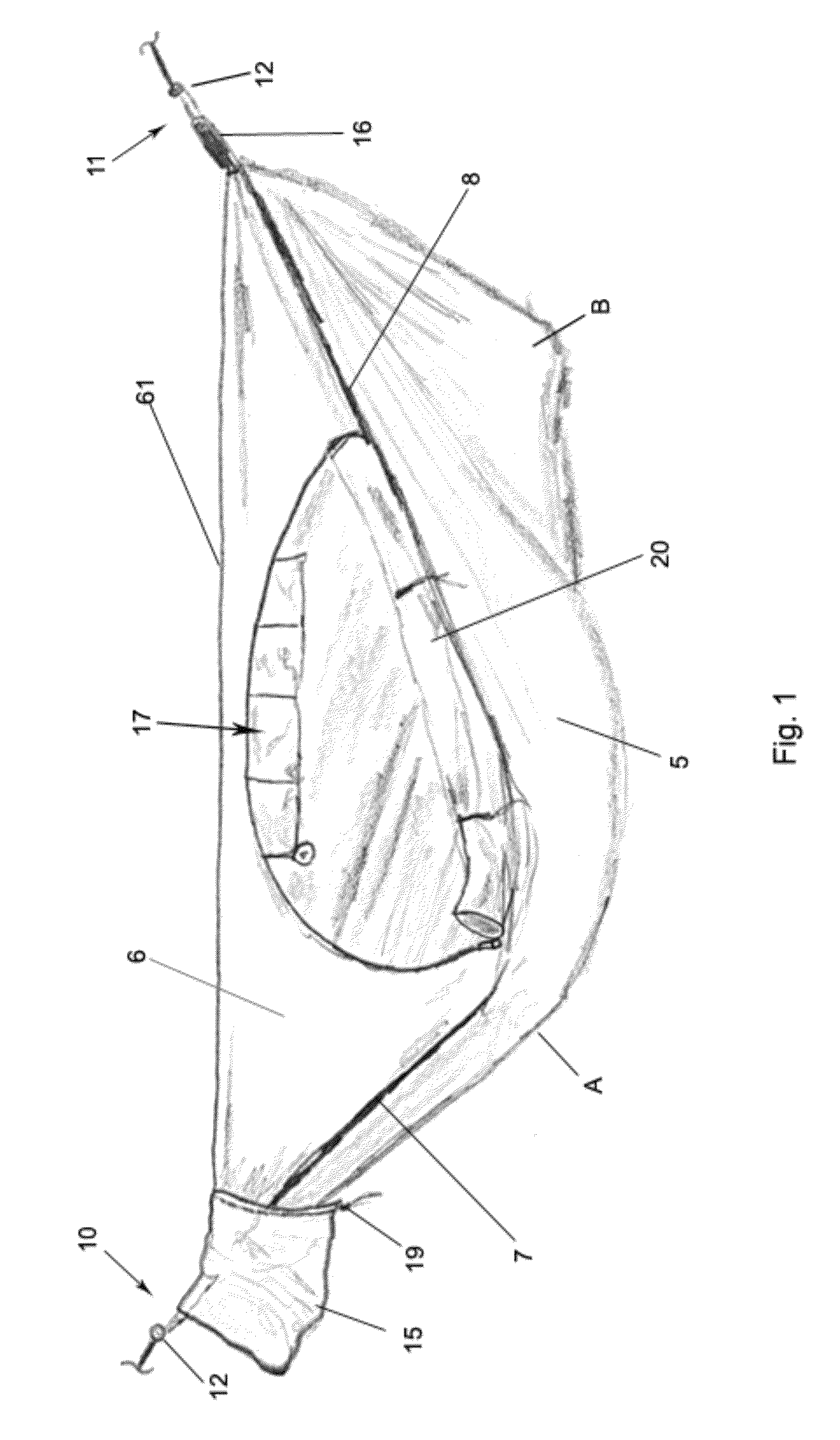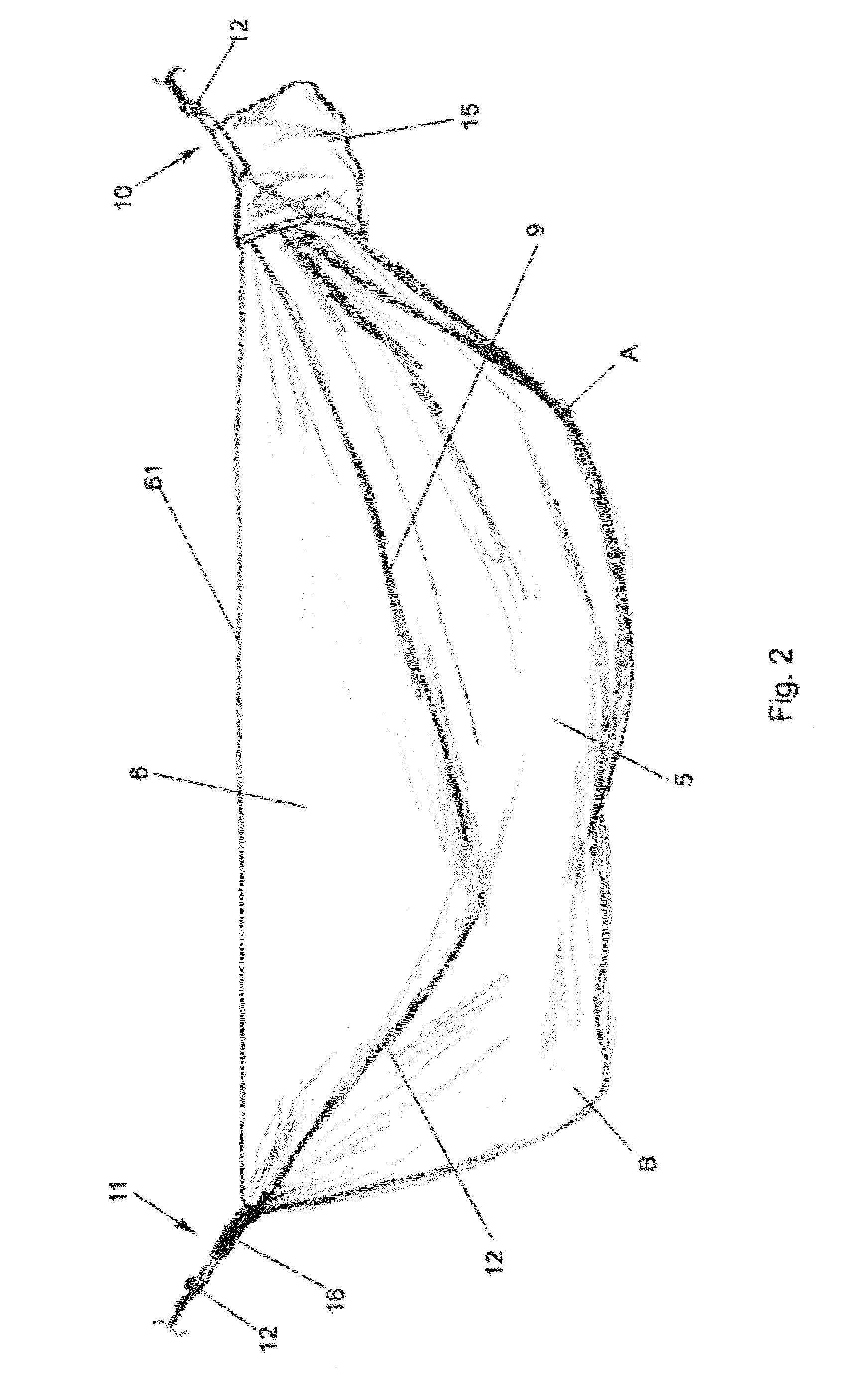Fully enclosed four season camp hammock
a hammock and enclosed technology, applied in the field of fully enclosed four-season hammocks, can solve the problems of lack of insulation quality, lack of good body heat retention, and much more difficult to get a full night's sleep or to lay on one's sid
- Summary
- Abstract
- Description
- Claims
- Application Information
AI Technical Summary
Benefits of technology
Problems solved by technology
Method used
Image
Examples
Embodiment Construction
[0028]FIG. 3, which illustrates how the fabric that makes up the hammock body 5 is to be cut to its four-sided shape with curved or angled ends note that Curves C&E are more shallow than Curves D&F as shown), gives a better perspective on how the finished hammock will take its shape and allow the occupant's head, legs and feet to lay in line with the torso. As shown on FIG. 3, there are three intersecting lines: 1) The Support Axis 30, ending at End Points 10&11, 2) The Longer Diagonal Axis 29, ending at Curves E&D and, 3) The Short Diagonal Axis 28 ending at Curves C&F. The point at which these lines intersect is at the centerline of the hammock. This is approximately where the occupant's waist and hips would be. The Longer Diagonal Axis is the axis that the occupant will be lying on and is noticeably longer than the Short Diagonal Axis. This is created by cutting the fabric at each end of the hammock to the curved shapes shown in FIG. 3 as Curves C, E & D, F.
[0029]Other hammock ma...
PUM
 Login to View More
Login to View More Abstract
Description
Claims
Application Information
 Login to View More
Login to View More - R&D
- Intellectual Property
- Life Sciences
- Materials
- Tech Scout
- Unparalleled Data Quality
- Higher Quality Content
- 60% Fewer Hallucinations
Browse by: Latest US Patents, China's latest patents, Technical Efficacy Thesaurus, Application Domain, Technology Topic, Popular Technical Reports.
© 2025 PatSnap. All rights reserved.Legal|Privacy policy|Modern Slavery Act Transparency Statement|Sitemap|About US| Contact US: help@patsnap.com



